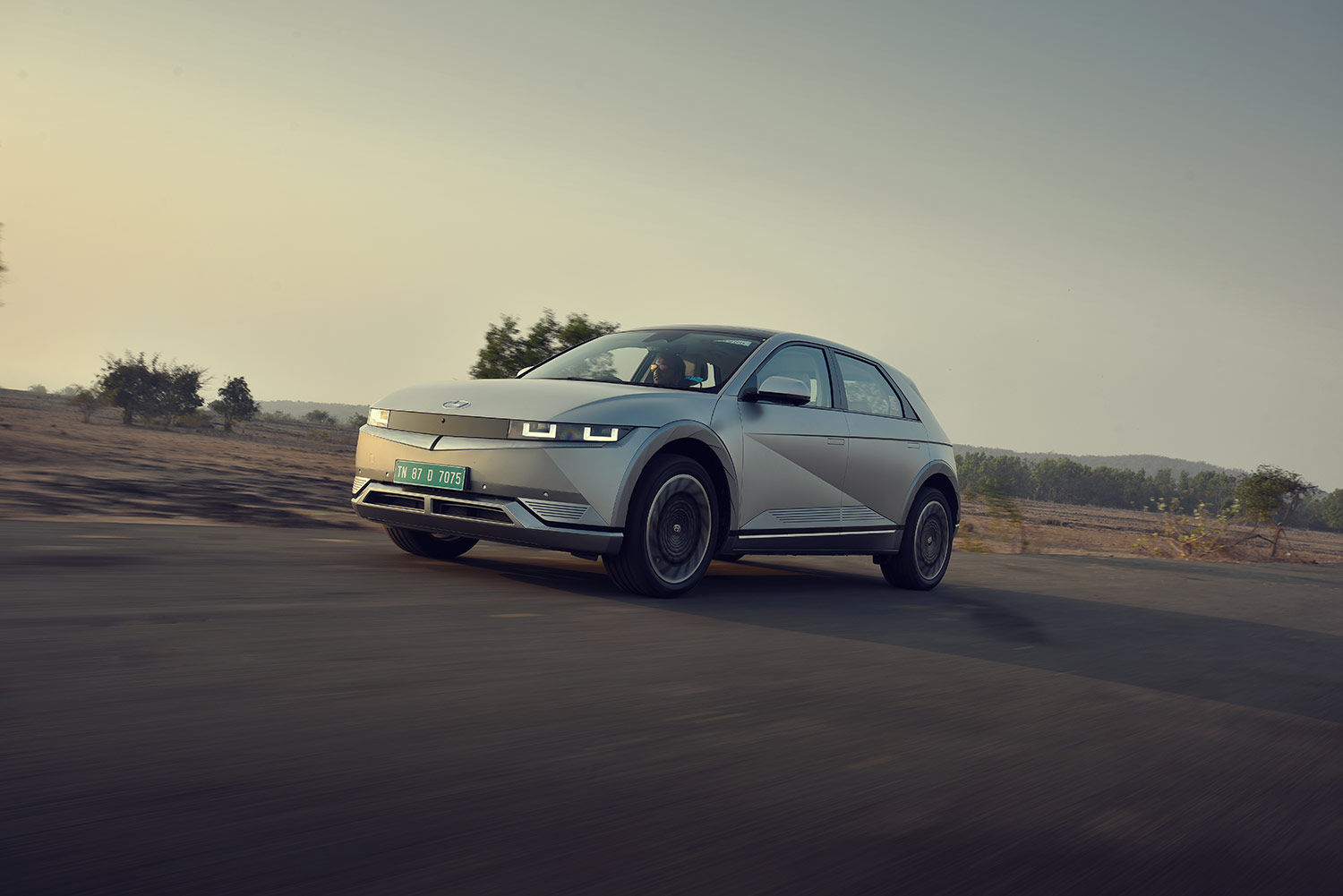Ever Wondered Why Electric Car Manufacturers Only Give 0-80% Charging Time? Here’s The Explanation
Modified On Apr 13, 2023 01:43 PM By Tarun
- Write a comment
We decode why fast charging works for almost all cars but only up to 80 per cent of charge

The popularity of electric cars increases by the day, and one must have had the slightest consideration of getting an EV as their next car. While their purchase price might be higher than regular ICE cars, the daily running costs are much more affordable with an EV. Those living in metropolitan areas or high rises have the possibility of getting an electric charger fixed in their parking. Otherwise, you have the option of fast charging through public chargers.
Those familiar with the fast-charging process, must have noticed that manufacturers only claim the charging time from zero to 80 per cent, and not for a full charge. Why not? Well, we had the Hyundai IONIQ 5 with us, which acted as the test car for clearing our doubts. Here is the nitty-gritty about fast-charging an EV:
Observations With The Hyundai IONIQ 5

We took the IONIQ 5 to a Shell station on Sus Road (Pune, Maharashtra), which has a 120kW fast charger installed. With 25 per cent juice left in the battery, we plugged in to see how much time it takes for a full charge. Here are our observations:
| Charging percent |
Time |
| 25 to 30 per cent |
2 mins |
| 30 to 40 per cent |
4 mins |
| 40 to 50 per cent |
3 mins |
| 50 to 60 per cent |
4 mins |
| 60 to 70 per cent |
5 mins |
| 70 to 80 per cent |
6 mins |
| 80 to 90 per cent |
19 mins |
| 90 to 95 per cent |
15 mins |
Key Takeaways:
-
For every 10 per cent of charge added until 80 per cent, the IONIQ 5 took around three to five minutes.
-
With a 120kW charger, you can charge up the EV to 80 per cent in approximately 30 to 40 minutes.
-
However, once the charge hits 80 per cent, it took close to 20 minutes for the next 10 per cent charge to be added.
-
The 90 to 95 per cent took another 15 minutes.
-
With the charge at 95 per cent, the driver’s display was showing a range of 447 kilometres in Eco mode, 434 kilometres in Normal, and 420 kilometres in Sport.
Why Did It Take Longer To Charge Beyond 80 Per Cent?
View this post on Instagram
Till 80 per cent, the IONIQ 5 was charging with the max capacity of 120kW, but like all other electric cars, the speed dropped to 10-20kW post that. Be it any type of fast charger, post 80 per cent, the power will drop to 10-20kW.
The most important reason for the 80 to 100 percent charge to be longer is because the battery starts heating up during a fast charge cycle. Sustained high temperatures are not healthy for the battery and a lower charging speed helps it cool down. Lithium-ion batteries are unable to tolerate high voltages for longer durations, for it would start degrading the pack’s health over time.
You may have experienced a similar thermal phenomenon with your smartphone wherein fast-charging regularly from a low percentage may heat it up. Think of it this way - You’re packing your bag and you stuff the clothes till 80 per cent or till the border of the suitcase. Once you’ve reached that level, the further packing needs to be analyzed and this takes up more time.

For any electric car, up to 80 per cent, the battery cells charge up in a non uniform manner. However, beyond 80 per cent, the cells charge uniformly to the brim. Since the system is identifying the cells and juicing up, it voluntarily reduces the charging speed. This smart detection system is also seen in iPhones, where they quickly charge up to 80 per cent and then have a reduced charging speed.
Now this charging system need not be compulsory for a fast charger. Since most AC chargers have a capacity between 7kW to 11kW, the voltage won’t dip by a huge difference, but might drop by a small amount. These are the reasons why manufacturers mostly only claim the zero to 80 per cent or 10-80 per cent fast-charging times.
Read More on : Hyundai IONIQ 5 Automatic
1 out of 1 found this helpful















